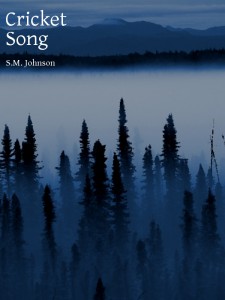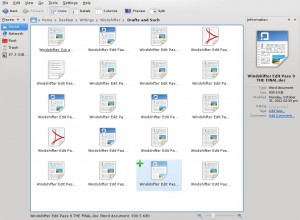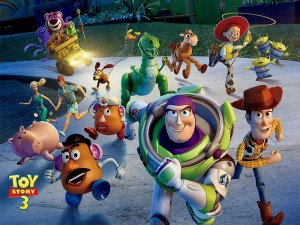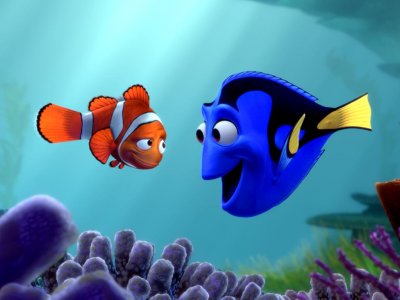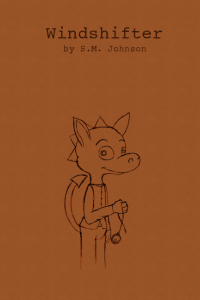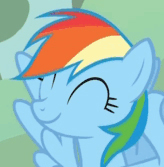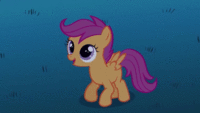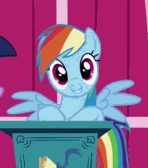CHAPTER ONE
TEN YEARS PRIOR
Outside the sky was gray and inside the fluorescent lights were shining harsh light down onto an almost empty little classroom. “It’s not that she’s not a bright kid, it’s just that… well, I don’t know. It’s so hard to get into her mind. Who knows what she’s thinking. She hardly even talks.” Ms. Nelson paused here to take a sip of latte out of a brown paper cup, and the two adults sitting across from her at her desk took the opportunity to talk themselves.
“She’s a little more open at home… she clams up the minute someone she doesn’t know shows up, though,” said Mrs. Dillford, combing through her hair with her fingers. “But she’s always been a little…”
“We just want to make sure she’s not causing any issues, I mean. We know she’s different,” broke in Mr. Dillford, gesticulating as he spoke.
“Oh no, she never causes problems,” Ms. Nelson said hastily as she set down her cup. “But I worry she’s not paying attention sometimes. She… look, I’ll show you. Here…” she pulled out a tan-colored file folder and set it on the desk. “This is some of her homework from the past few months.” She opened the folder and began to flip through papers, revealing pages of schoolwork, all with fair grades— and all thoroughly covered in scribbles. Fanciful characters of all shapes and sizes lined the margins and landscapes arched their way along the tops.
“See,” said Ms. Nelson, “That’s all she does, is… draw, and I know she’s very good at it, but…”
“Cadence is…” Mrs. Dillford spoke up, but hesitated briefly before finally continuing, “She does that at home, too. She always has. That’s just… her.”
“Yeah,” Mr. Dillford nodded in agreement.
“I know it’s important to her and I know she’s… herself, but this is third grade,” said Ms. Nelson. “The older she gets, the less she’s going to be able to get away with this, and as a teacher I’m not sure how best to approach her on it, or if I should even approach her at all. She’s a good child… who knows, maybe she’ll surprise us all and become some famous artist some day.”
“Like they have those anymore,” Mr. Dillford joked.
“Tell me about it,” Ms. Nelson reached for her cup again.
Cadence was outside in the hall, sitting at a desk that had been set up out there. The most remarkable thing about her appearance was that she was rather unremarkable and thus seemed to be nearly invisible to other students, who mostly ignored her or at least failed to acknowledge her existence, but this had never bothered her much. School in general didn’t bother her much, in fact; it was just another thing that happened in her day that might inspire her or might bore her. Usually the result fell somewhere in between.
She didn’t know what they were talking about in the classroom, but she didn’t care— it was one of those mysterious Parent-Teacher Conferences that happened twice a year and she didn’t ever put much thought into them. At the moment the main issue on her mind was that she was lacking paper and a pencil and thus she was incurably bored.
She swung her legs back and forth as she traced invisible patterns onto the desk with her finger. The pictures in her brain were vivid and she knew how to translate this with her hands, but while her imagination was strong she eventually become frustrated with being unable to see her results, so she stopped and looked around restlessly, desperate for any sort of creative stimulation. She’d read every sign and notice on the wall already, and examined every picture and every poster…
Bored.
Figuring she could perhaps pass the time by using the restroom, and assuming that her parents would not care too terribly if she did so, she slipped out of her chair. She didn’t really have to go, of course, but it would give her something to do, and so off she went down the familiar hallways of the microcosm that was her school. Down one hall she went, and then around a corner, and down another hall, opting to go to a more distant bathroom than she usually did, just to kill time. She had practically lived in this school every year since Kindergarten, and she knew it very well— most of it, anyway, because way down here by the bathroom was the wing that branched off to the middle school, where big kids like her brother hung out. The Big Kids were never happy about having to share space with the Little Kids, and they tended to be scary in general, since Cadence could swear that their heads almost touched the ceiling, so she tried to keep a respectful distance from this section of the school, rarely using the bathrooms and drinking fountain here and never going past them. She paused as she approached and brushed back her hair, preparing to lean down and take a sip from the fountain.
But then she saw it: a classroom, just beyond, with the door ajar, and from her vantage point she could barely make out pencils and paint and brushes…
Cadence stared at the room. She looked around a bit, and then back at the room. Well, since no one else was around…
She approached the room and entered tentatively. No one was there. Good, because the place was magical. It was an art room, filled to the brim with pallets and paintbrushes and model clay and students’ paintings lining the walls, and nothing was going to drag Cadence away. At least, not until she could grab a paper and some pencils and sneak away, she figured.
She found a stack of blank paper easily enough, but all the pencils were in an empty coffee can high up on a shelf. Cadence stood underneath the shelf and stared up at the can for a while, and then wandered over to the teacher’s desk where there was a wooden chair that she could pull over to use as a step. She paused there, though, upon seeing something on the desk. It was a watercolor painting. It wasn’t anything particularly fancy, a picture of some farmlands— unfinished. There was a red barn and a big yellow tractor. A brown fence ended partway through the page, a horse behind it only half-colored.
Cadence stared at it. Something was off. There should be more horses, she thought, to balance out the picture. Perhaps some of them could be running across the field. And she could already visualize the colors that should be in the sky…
Suddenly there was a noise behind her. She swung around, her thoughts knocked out of her, and she saw a tall, lanky man with glasses and a thin goatee entering the room. He paused upon seeing Cadence and stared at her, and Cadence stared back, her eyes round and wide, like a wild creature caught in headlights.
“Hey,” said the man, his voice relaxed and calm. “Did you need something?”
Cadence didn’t say anything; her whole mind felt frozen. She hated this. She hated having to talk to people that she didn’t know. Any time she had to, her mind would go blank, and she hated it.
The man picked up on her shyness and her age and sauntered over to where she was at the desk. “Are your parents at the parent-teacher conference?”
Cadence nodded tentatively, backing away from the desk as the man approached, but he just chuckled a bit at he sat down at his desk. “Are you lost?”
Cadence shook her head no.
“Bored?”
Cadence didn’t say anything, though she was somewhat impressed with the man’s ability to guess her thoughts. Then she realized two things, one after the other. First, this man was now sitting in the chair she was planning to use as a stool, so she’d have to come up with an alternate plan. Second, perhaps this man was an alternate plan. Of course, that would mean having to talk, but…
…but she was desperate.
She opened her mouth to speak. A squeaky stammering noise was all that came out, much to her dismay.
“What was that?”
“I said I just need a pencil,” she mumbled.
“A pencil, huh. What do you need it for?”
Cadence was going to have to talk again. She wished people would stop asking her questions and just accept what she needed. It would make life so much easier. “Just… just to draw,” she said.
“Do you like drawing?” the man asked.
Cadence nodded emphatically, although admittedly part of the reason her nod was emphatic was because she was glad she didn’t have to talk again to answer this time.
The man looked at her for a moment, as though trying to decipher the unusual little girl, but he didn’t dwell long on this and said “I’ll tell you what. I’ll give you one of my best pencils, but you’ve gotta promise me something, okay?” He opened a drawer in his desk and pulled out a drawing pencil that was painted blue and had shiny golden letters on it. He held it out to Cadence and said, “This is a drawing pencil. The kind real artists use. So use this pencil to draw a masterpiece. Okay?”
Cadence stared at the pencil for a moment, hesitating, but then she reached out and took it.
“Alright, now you’d better go back to your classroom, you don’t want to worry anybody.” The man began sorting papers on his desk, and Cadence, glad to have a pencil and relieved to no longer be the center of attention, hastily left the room, although as soon as she had, she realized she’d forgotten to grab a piece of paper. Her heart fell a bit, but there was no way she was going to go back in the room now that A Person was in there, so she conceded defeat on this one and wandered down the hallways back to her classroom.
The conference was still going on when she returned; no one had noticed her brief absence. She sat herself back at the desk and drew patterns on the desk with the end of the pencil, which, curiously she thought, did not have an eraser, but rather a bright golden metallic nub. No wonder the man had told her to draw a masterpiece, she thought. She couldn’t erase any mistakes, so whatever she drew with the pencil would have to be perfect.
Masterpiece.
The more she thought about it, the more she was glad she didn’t have any paper with her at the moment— and for Cadence, that was a rare thing to think. But she’d have to put some thought into figuring out a good masterpiece before she could draw one.
A few moments passed and her parents and teacher left the room. Ms. Nelson said goodbye to Cadence, and her parents walked with her out of the school. Cadence noticed that her mother was carrying a folder under her arm, but she didn’t question it, and similarly her parents didn’t question the pencil that their daughter had apparently procured out of nowhere, since that sort of thing was fairly commonplace with her.
The sky was a steel-gray blanket that hung in the air like a wet towel. This thick sky tended to lull unsuspecting people into thinking that nature was dead and still, but those who knew better knew that it wasn’t: leaves rustled, branches quivered and trembled, a rogue seagull strutted around the parking lot and off in the distance somewhere a goldfinch chirped: cheep-cheep-cheep. It wasn’t raining, but the impenetrable sky liked to threaten that it could at any moment, and a slight breeze blew Cadence’s brown hair against her face. Not that she put much thought into this; this was normal weather and besides, she was still busy trying to figure out what to draw for a masterpiece as she climbed into the back of the family car and buckled up.
Her mother, in the passenger seat, turned around and handed her the folder she’d been holding. “That’s your old homework,” she said. “You get to keep it.”
Cadence took the folder without questioning and flipped it open, revealing hundreds of her sketches of strange creatures and strange places, scattered across math homework and history homework and English homework and everything else.
“You should doodle a little less; you need to pay attention in class,” her mom continued. “I know you like to draw, but there’s a time and a place, okay?”
“Fiiiine.” Cadence had been through this discussion before with various adults and had learned that “Fine” was usually the best way to get out of the talk, or at least push it off a little farther. Her mind quickly drifted back to the glorious paper that was now in front of her… paper with blank backsides and all that marvelous drawing space…
…but no, she still couldn’t think of a masterpiece. Hmm.
She thought all the way home, which wasn’t a long journey so she didn’t feel too bad about having not come up with anything yet. They parked in the driveway, and Cadence haphazardly stuffed the papers back into the folder, unbuckled her seatbelt, and hopped out of the car. She turned to shut the door, but as she did so, the folder slipped out from under her arm and landed open on the ground. She reached down to pick it up, but the wind whipped up a gust and blew several pages of her doodle-covered homework into the yard. Cadence gave a little gasp and ran after them, reaching for as many as she could, but the wind was persistent and Cadence’s grasp was awkward because she was still holding her new pencil, and she watched as pages went fluttering away down the street, some drifting into other peoples’ yards and others disappearing into stretches of evergreen trees behind those yards.
Cadence stared at the escaped papers as they twirled around in the wind. She was distraught and considering running after them but then she realized that then she would risk running into people, which she did not want to do. She was shaken out of her thoughts by her dad calling out “You’re not gonna get ’em back now, just grab what you can and come on inside.” So Cadence pushed her hair out of her eyes, closed the folder and trapped its remaining contents as best as she could, and followed her parents inside the house.
It was nighttime and Cadence was in her room. She should have been asleep, but instead she was playing with toys on her windowsill. She still hadn’t thought of a suitable masterpiece to draw with her new pencil, but she had mostly put it out of mind by this point. She figured she could always come up with something later. Right now she was stretching her imagination in other ways— ways which she knew she was entirely too old for, but which she continued to do nonetheless. She had plastic dinosaurs and a rubber snake and a stretchy lizard, and she was carefully acting out intricate scenes with them, providing different voices and personalities for each one, set partially to a script that she had written earlier.
“Do you really think you can beat me? You are nothing! You are but an ant to me. I laugh at your folly. Bwa. Ha. Ha,” said the Tyrannosaurus Rex.
“Don’t listen to him, Proto! It’s a lie! I believe in you!” said the rubber snake.
Cadence here made several detailed special effects sounds as the Tyrannosaurus Rex and rubber snake engaged in mortal combat, which culminated in the defeat of the snake.
“Nooo! Stretches!” wailed the Protoceratops.
“Hahahaha! You see? You have failed. And now, you’re going to see just how powerful I really am!” Cadence attached a little felt cape to the T-Rex’s back. “You see, I am not an ordinary dinosaur. I am actually the dreaded… uh… terrible… er… X-REX!”
“X-Rex? Oh no! I heard about you in the ancient legends!”
“Yes, of course you have. Everyone else has, too. And I’m in charge here now!”
“Oh no!!” Proto wailed.
“Don’t worry!” the stretchy lizard spoke up now. “We have the secret weapon! We can still defeat him!”
“What??” X-Rex screeched. “How did you get it? I’ll fight you for it! Raaaawr!”
She was in the midst of this intense scene when a very unusual creature hopped in through the partially open window and began to watch what she was doing.
This creature was an insect— somewhat larger than most— with big hind legs that it sat on and two long wiry antennae that sprouted from the top of his head. Its eyes were big and human-like, and it sat and blinked at Cadence, who was still deep in play. In fact, she didn’t notice the bug until he inched a little closer and cleared his throat.
Now clearing one’s throat is typically a fairly normal thing to do, unless one is a bug, and even Cadence knew this instinctively and she put down the toys and turned to look directly at this intruding insect. It didn’t scare her at all, but then, she’d always appreciated the more unusual creatures of the world, and besides, whatever-it-was was kind of cute.
Cadence peered at it and it peered back, and then it did something that caught the girl only partially off-guard: it talked. “Hi,” it said politely, antennae quivering.
Cadence’s eyes widened. She’d always known this kind of stuff could happen. She’d seen enough movies to know how this sort of thing worked. Just like she knew Santa Claus was real, too, although she didn’t dare admit it to anyone. Still, coming across a talking animal in real life was understandably a bit of a shock.
“Hi,” the bug said again, inching a bit closer, in case Cadence hadn’t heard it talk the first time. But she had, and gulped and returned the salutation somewhat shakily. “H… hi.”
“You’re Cadence, right?” asked the insect.
Again, Cadence was only half-surprised that the thing knew her name. She nodded.
“Good. I’m at the right place then,” said the bug.
“Who are you?” Cadence asked, her courage eking out a bit more now.
“Your imaginary friend.”
“Ohh,” said Cadence. It all made sense now. And then, excited about having a real imaginary friend like on TV shows, she ventured, “What’s your name?”
The insect cocked its head, its antennae quivering. “I… don’t know. I don’t think I have one yet.”
“Well, who names you?”
“You do… I think.”
“You think?”
“Hey, take it easy on me, I’m pretty new at this whole imaginary friend thing,” the bug put his hands on his hips a bit indignantly. It was a playful gesture, though, and he grinned.
Cadence thought for a moment, trying to figure out what one would name an imaginary friend, or any sort of bug for that matter, and then finally said, “How about… Zadmark.”
“Zadmark?” the insect wrinkled his face for a second or two, but then seemed to change his mind and approve. “That works.”
“Really?”
“Oh yes. It’s very, uh… exotic.”
Cadence was tickled by her new friend’s approval, but before she could say anything, the bug asked, “So, are you going to invite me in? It’s kinda cold out here…”
Cadence reached over and shut the window, and Zadmark leaped forward with strong legs and landed on Cadence’s desk, which was littered in paper and pencils. “Nice place you’ve got here,” he commented. “And oooh… nice drawings.” He looked below him at the multitude of papers that he was now standing on.
“Thanks,” said Cadence. She was never sure what else to say when she was complimented… she did think her drawings were pretty good, after all.
“Do you draw a lot?”
“Mm-hmm.”
“I thought so!”
Zadmark did not explain this comment, and Cadence didn’t ask. She was sure imaginary friends had their ways of figuring all of this out. She just watched, fascinated, as the insect hopped around on those long legs of his, examining the bedroom of his new charge. Eventually he hopped up onto her nightstand— there, next to her alarm clock, was the blue pencil she’d received earlier. “You sure have a lot of pencils,” Zadmark said.
“Oh, that one’s special,” said Cadence, going over to sit on the edge of her bed.
“Oh?”
“Yeah. I have to draw a masterpiece with it. So I can’t use it until I think of something perfect.”
“Ohhh. I see.”
They were quiet for a moment, and then Zadmark said, “Well! You’d better go to bed. I mean, if I’m gonna be a good imaginary friend and all, I can’t be keeping you up late now, can I?”
“You’ll… still be here in the morning?” Cadence asked, suddenly worried that she’d wake up and find her new friend gone.
“Oh yeah,” Zadmark said. “I’ll be here for a while.”
“How long?”
“However long you need me for.”
“How long is that?”
“Well, I guess we’ll see.”
Cadence thought about this for a minute before accepting it. “Okay,” she said, and then she worked her way into bed beneath her crumpled sheets. “Goodnight, Zadmark.”
Zadmark settled himself down on a napkin. “See you in the morning, kid.”
—
“Cricket Song” will be available through most digital channels within the next day or two and a paperback version will be available soon after.
